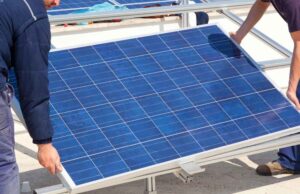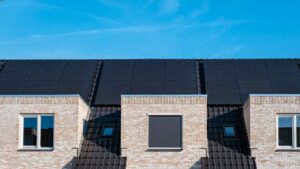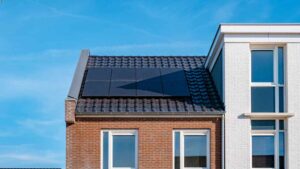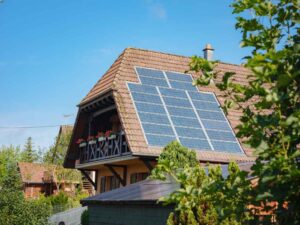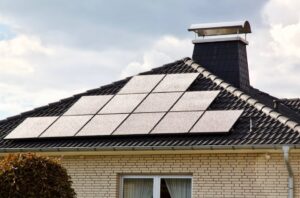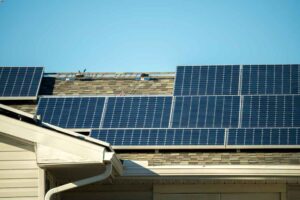Understanding how to find the best angle for solar panels is one of the most important steps in maximizing your solar energy system’s performance. In South Jersey, where weather patterns and sun exposure can vary by season, the best position for solar panels can make a major difference in energy production.
At Mack Solar and Roofing, we know that proper panel placement can improve energy output by as much as 20% or more. Whether you’re considering a new installation or looking to optimize your current setup, this blog will explain how to determine the right angle and orientation for your panels to get the most out of your system in South Jersey.
Why Panel Angle Matters
Solar panels work by converting sunlight into electricity using photovoltaic (PV) cells. The more direct sunlight your panels receive, the more energy they can generate. That’s why learning how to find the best angle for solar panels is essential—especially in areas like South Jersey where maximizing sun exposure during certain months can impact your annual return.
Understanding Solar Angles and Tilt
The tilt angle of a solar panel refers to how steeply it’s positioned relative to the ground. Ideally, the tilt angle should allow the panels to face the sun as directly as possible. This angle depends on two main factors:
- Latitude
- Seasonal Variation in Sun Position
South Jersey sits at roughly 39.5° latitude, meaning a fixed tilt angle between 30° to 40° is often ideal. However, seasonal adjustments—or tracking systems—can make this even more efficient.
Fixed Tilt vs. Adjustable Systems
Fixed Tilt
Most rooftop solar systems in South Jersey use a fixed tilt based on the slope of the roof. A roof pitch of 30–40 degrees is usually optimal and often aligns well with the best solar angle for this region.
Adjustable Tilt
Ground-mounted systems or specialized racks can allow for seasonal tilt adjustments. This setup is more flexible but also more expensive. Still, for large-scale solar systems or homeowners looking for maximum efficiency, adjusting angles a few times per year can improve overall output.
Suggested Seasonal Tilt Adjustments:
- Winter (Dec–Feb): Latitude +15° (~55° for South Jersey)
- Summer (Jun–Aug): Latitude –15° (~25° for South Jersey)
- Spring/Fall: Latitude (~40°)
Best Position for Solar Panels: Orientation Matters
In addition to angle, the orientation of your solar panels affects how much energy they produce. For homes in South Jersey, the best position for solar panels is generally true south. This maximizes sun exposure throughout the day, especially during peak energy hours.
What If My Roof Doesn’t Face South?
Not every home has a perfectly south-facing roof, and that’s okay. East- and west-facing roofs can still be effective, especially with newer high-efficiency panels. But they may produce 10–20% less energy than panels facing true south.
Our team uses advanced solar mapping tools and shading analysis to find the most productive layout for every roof—even unconventional ones.
Tools to Help You Find the Best Solar Panel Angle
There are several tools and calculators you can use to determine the optimal panel angle for your location. These tools take into account your zip code, roof pitch, and sun path throughout the year.
- PVWatts Calculator by NREL: This tool by the National Renewable Energy Laboratory provides accurate solar performance estimates for specific addresses. (source)
- Solar Position and Intensity Calculator: Offered by NOAA, this calculator helps track solar angle and intensity by date and time. (source)
These resources are helpful for South Jersey homeowners who want to do a bit of research before scheduling an installation or inspection.
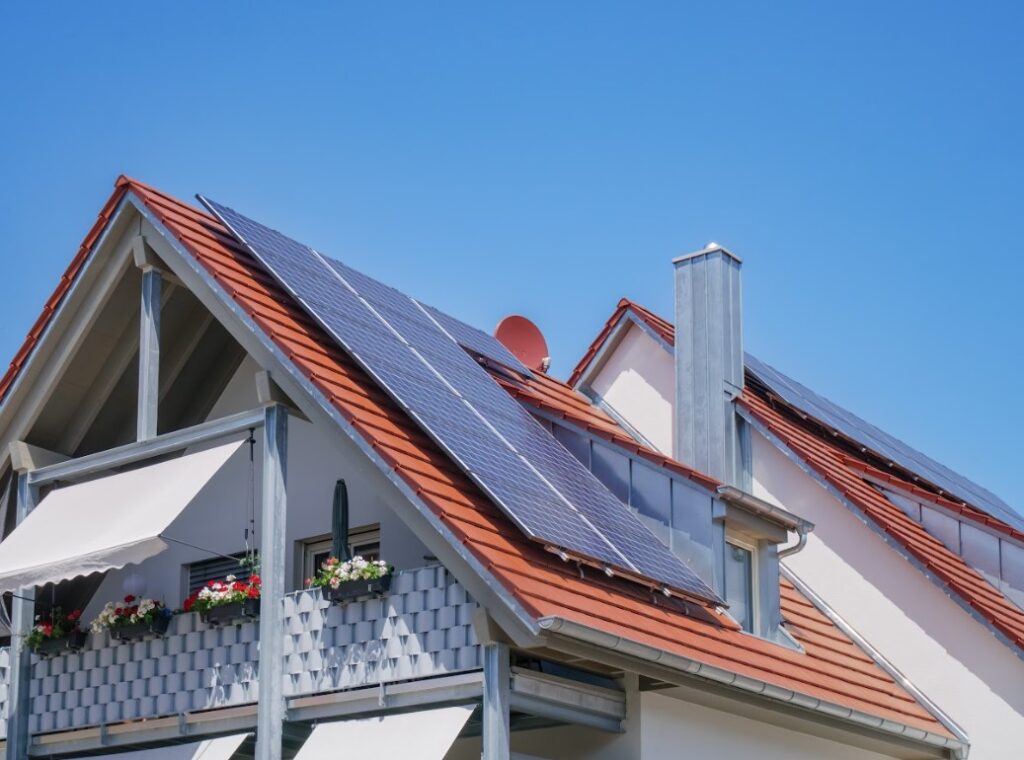
How Weather and Roof Type Affect Solar Angle in South Jersey
Seasonal Cloud Cover and Sunlight
South Jersey gets about 202 sunny days per year, but cloud cover can vary greatly from season to season. Setting your panel angle correctly can help compensate for reduced sunlight during cloudier months.
- Steeper angles (closer to 50–60°) help during winter when the sun is lower in the sky.
- Flatter angles (closer to 20–30°) perform better in summer when the sun is high.
Roof Shape and Materials
Homes with asphalt shingles or metal roofing are ideal for solar installations. Flat roofs require angled racks to achieve the proper tilt. No matter your roof type, the key is ensuring your panels are secure, properly aligned, and angled for optimal exposure.
Why South Jersey Is Ideal for Solar Panel Optimization
With generous state incentives and a mix of sunny and cloudy weather, South Jersey is one of the best places in the northeast to install solar panels. Homeowners can take full advantage of the New Jersey Clean Energy Program and net metering to maximize both financial and environmental benefits.
Knowing how to find the best angle for solar panels in this region ensures your investment pays off quickly. And with the right tilt and orientation, you can generate enough power to nearly eliminate your electric bill.
The Role of Solar Experts in Determining Panel Angle
While tools and calculators can give you a general idea, a site-specific inspection by trained professionals is the best way to find your ideal panel angle. At Mack Solar and Roofing, we evaluate:
- Your roof pitch and direction
- Local shading from trees or structures
- Seasonal sun paths
- Energy consumption habits
This personalized approach ensures your system is designed for maximum efficiency, tailored to your South Jersey home.
Avoiding Common Mistakes in Panel Placement
Even a great solar panel system can underperform if it’s installed at the wrong angle or orientation. Here are a few mistakes we help homeowners avoid:
- Ignoring shading issues: Trees, chimneys, or nearby buildings can block sunlight.
- Improper angle for seasonality: Not accounting for winter vs. summer sun positions.
- Assuming all roof pitches are equal: Small angle differences can impact production over time.
With expert installation, these issues are easily addressed during the planning phase.
Boosting Output with Tracking Systems
For homeowners interested in squeezing every bit of efficiency out of their system, solar trackers are an advanced solution. These systems adjust panel angles automatically throughout the day to follow the sun’s path.
While not common for most residential setups due to cost, solar trackers can increase output by up to 25% and are ideal for larger ground-mounted systems.
Putting It All Together: Maximize Your Energy
Understanding how to find the best angle for solar panels gives you the power to optimize your energy system in South Jersey. Whether you have a perfect south-facing roof or something less ideal, a well-designed system with the right tilt and position can provide substantial benefits:
- Higher energy production
- Faster return on investment
- Lower utility bills year-round
At Mack Solar and Roofing, we make sure every system we install is fine-tuned for optimal performance. With industry-certified professionals and decades of roofing expertise, we’re uniquely positioned to help South Jersey homeowners get the most out of their solar investment.
Get a Free Inspection and See What’s Possible
Ready to find the perfect angle for your solar panels? Our experienced team will assess your roof and design a solar layout that’s built to perform.
Get a free inspection now and let us show you how the right angle and position can take your energy savings to the next level.

